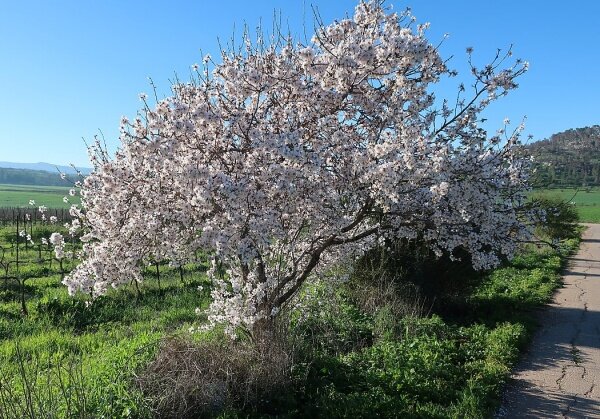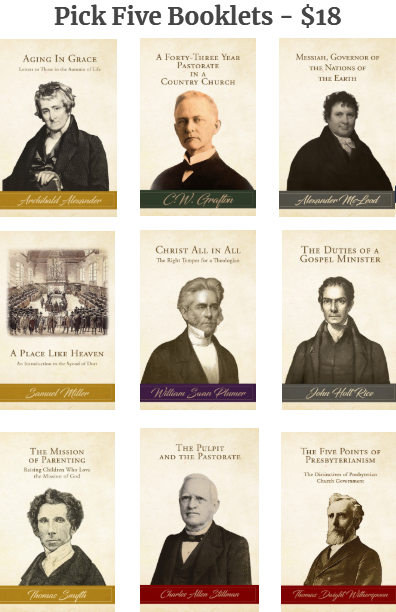(Receive our blog posts in your email by clicking here. If the author links in this post are broken, please visit our Free PDF Library and click on the author’s page directly.)
Thomas De Witt Talmage — “the American Spurgeon,” one of the most famous preachers in American history — was the youngest son of David T. and Catherine “Catey” Van Nest Talmage. Born in New Jersey, where his father would serve in the state legislature, the son was raised in the Reformed Church (David served as a deacon in the First Church of Raritan), and that is where Thomas began his ministry before being called to serve in the Presbyterian Church.
Engraving of the 1833 Leonid Meteor Shower by Adolf Vollmy (1889), based on the painting by Karl Jauslin.
Thomas once gave an account of his father’s experience traveling between work and home of an event that astronomers still talk about today. The horse that David Talmage was riding was named “Star.”
My father was on the turnpike road between Trenton and Bound Brook, coming through the night from Trenton, where he was serving the State, to his home, where there was sickness. I have often heard him tell about it. It was the night of the 12th and the morning of the 13th of November, 1833. The sky was cloudless and the air clear. Suddenly the heavens became a scene never to be forgotten. From the constellation Leo meteors began to shoot out in all directions. For the two hours between four and six in the morning it was estimated that a thousand meteors a minute flashed and expired. It grew lighter than noon-day. Through the upper air shot arrows of fire! Balls of fire! Trails of fire! Showers of fire! Some the appearances were larger than the full moon. All around the heavens explosion followed explosion. Sounds as well as sights! The air filled with an uproar. All the luminaries of the sky seemed to have received marching orders. The ether was ribbed and interlaced and garlanded with meteoric display. From horizon to horizon everything was in combustion and conflagration. The spectacle ceased not until the rising sun of the November morning eclipsed it, and the whole American nation sat down exhausted with the agitations of a night to be memorable until the earth itself shall become a falling star. The Bible closes with such a scene of falling lights — not only fidgety meteors, but grave old stars. St. John saw it in prospect and wrote: ‘The stars of heaven fell unto the earth even as a fig tree casteth her untimely figs when she is shaken of a mighty wind.’ What a time there will be when worlds drop! Rain of planets! Gravitation letting loose her grip on worlds! Constellations falling apart and galaxies dissolved!
David Talmage also served as sheriff, and worked to promote education in New Jersey. He lived a long and fruitful life (1783-1865). When he died, Thomas delivered a commemorative sermon titled “The Beauty of Old Age,” based on Ecclesiastes 12:5: “The almond tree shall flourish.”
An almond tree in blossom.
Thomas spoke of how his father shined so brightly even in old age. Even as the almond tree blossoming is a picture of the same.
Finally, I notice that in my father’s old age was to be seen the beauty of Christian activity.
He had not retired from the field. He had been busy so long, you could not expect him idle now. The faith I have described was not an idle expectation that sits with its hands in its pocket idly waiting, but a feeling which gather up all the resources of the soul, and hurls them upon one grand design. He was among the first who toiled in Sabbath-schools and never failed to speak praise of these institutions. No storm or darkness ever kept him away from prayer-meeting. In the neighbourhood where he lived, for years he held a devotional meeting. Oftentimes the only praying-man present before a handful of attendants, he would give out the hymn, read the lines, conduct the music, and pray. Then read the Scriptures and pray again. Then lead forth in the Doxology with an enthusiasm as if there were a thousand people present, and all the Church members had been doing their duty. He went forth visiting the sick, burying the dead, collecting alms for the poor, inviting the ministers of religion to his household, in which there was, as in the house of Shunem, a little room over the wall, with bed and candlestick for any passing Elisha. He never shuddered at the sight of a subscription-paper, and not a single great cause of benevolence has arisen within the last half-century which he did not bless with his beneficence. Oh! this was not a barren almond-tree that blossomed. His charity was not like the bursting of the bud of a famous tree in the South, that fills the whole forest with its racket, nor was it a clumsy thing, like the fruit in some tropical clime, that crashes down, almost knocking the life out of those who gather it, for in his case the right hand knew not what the left hand did. The churches of God, in whose service he toiled, have arisen as one man to declare his faithfulness and to mourn their loss. He stood in the front of the holy war, and the courage which never trembled or winced in the presence of temporal danger induced him to dare all things for God. In church matters he was not afraid to be shot at. Ordained, not by the laying on of human hands, but by the imposition of a Saviour’s love, he preached by his life, in official position, and legislative hall, and commercial circles, a practical Christianity. He showed that there was a such a thing as honesty in politics. He slandered no party, stuffed no ballot-box, forged no naturalization papers, intoxicated no voters, told no lies, surrendered no principle, countenanced no demagogueism. He called things by their rightful names; and what others styled prevarication, exaggeration, misstatement, or hyperbole, he called a lie. Though he was far from being undecided in his views, and never professed neutrality, or had any consort with those miserable men who boast how well they can walk on both sides of a dividing-line and be on neither, yet even in the excitements of election canvass, when his name was hotly discussed in public journals, I do not think his integrity was ever assaulted. Started every morning with a chapter of the Bible, and his whole family around him on their knees, he forgot not, in the excitement of the world, that he had a God to serve and a heaven to win. The morning prayer came up on one side of the day, and the evening prayer on the other side, and joined each other in an arch above his head, under the shadow of which he walked all the day. The Sabbath worship extended into Monday’s conversation, and Tuesday’s bargain, and Wednesday’s mirthfulness, and Thursday’s controversy, and Friday’s sociality, and Saturday’s calculation.
Through how many thrilling scenes he had passed! He stood, at Morristown, in the choir that chanted when George Washington was buried; talked with young men whose grandfathers he had held on his knee; watched the progress of John Adam’s administration; denounced, at the time, Aaron Burr’s infamy; heard the guns that celebrated the New Orlean’s victory; voted against Jackson, but lived long enough to wish we had one just like him; remembered when the first steamer struck the North River with its wheel buckets; flushed with excitement in the time of National Banks and Sub-Treasury; was startled at the birth of telegraphy; saw the United States grow from a speck on the world’s map, till all nations dip their flag at our passing merchantmen, and our “national airs” have been heard on the steeps of the Himalayas; was born while the revolutionary cannon were coming home from Yorktown, and lived to hear the tramp of troops returning from the war of the great Rebellion; lived to speak the names of eighty children, grandchildren, and great grandchildren. Nearly all his contemporaries gone! Aged Wilberforce said that sailors drink to “friends astern” until half way over sea, and then drink to “friends ahead.” With him it had for a long time been “friends ahead.” So also with my father. Long and varied pilgrimage! Nothing but sovereign grace could have kept him true, earnest, useful and Christian through so many exciting scenes.
He worked unweariedly from the sunrise of youth to the sunset of old age, and then in the sweet nightfall of death, lighted by the starry promises, went home, taking his sheaves with him. Mounting from earthly to heavenly service, I doubt not there were a great multitude that thronged heaven’s gate to hail him into the skies — those whose sorrows he has appeased, whose burdens he had lifted, whose guilty souls he had pointed to a pardoning God, whose dying moments he had cheered, whose ascending spirits he had helped up on the wings of sacred music. I should like to have heard that long, loud, triumphant shout, of heaven’s welcome. I think that the harps throbbed with another thrill, and the hills quaked with a mightier hallelujah. Hall, ransomed soul! thy race run — thy toil ended. Hail to the coronation!
Like an almond tree in blossom — which does so in winter, as Thomas notes (see “The Almond-Tree in Blossom” in his 1872 Sermons) — David Talmage served God well in old age, and the tribute that his son left for him is an encouragement to others, young and old, that one can hold on the starry promises, and shine all the brighter, not only in the noon-day of life, but also towards the end our days, even in the darkest of nights.





















![Map of the Synod of Appalachia from E.M. Craig, Highways and Byways of Appalachia (1927) [a book not yet available to read on LCP].](https://images.squarespace-cdn.com/content/v1/590be125ff7c502a07752a5b/1610072862405-JSAIANSL0ZKBHUC088PC/Map+of+the+Synod+of+Appalachia+smaller.jpg)







